The new movie “Midway” opened in theaters around the country this weekend. It has been roundly endorsed by Navy leadership. Here is the official statement about the movie from the Director of Naval History:
From: Director of Naval History
To: Senior Navy Leadership
Finally, Hollywood decided to make a $100 million dollar movie about real heroes instead of comic book heroes. In this case, the heroes are the pilots, aircrewmen, submariners, sailors, intelligence officers/code-breakers and senior commanders who against great odds and at great sacrifice turned the tide of the Pacific War against the Empire of Japan at the Battle of Midway on 4 June 1942. Although the movie is not perfectly historically accurate, the producers went to great lengths to be as accurate as possible given time and resource constraints, and it comes far closer than any other movie about naval combat (and is way more accurate than the 1975 “Midway” movie or the more recent “Pearl Harbor.”)
Whenever a Hollywood producer wants U.S. Navy support to make a movie, they are required to submit the script to the CHINFO West office in Los Angeles for review. If the script concerns a historic topic, it is then forwarded to Naval History and Heritage Command for a review of historic accuracy. I admit to getting pretty excited when I first read the script a couple years ago, because, although not perfect, it got so much right. Even better, in my view, it is a great depiction of the incredible courage of those who fought in the battle, on both sides. It depicts the heroic sacrifice of the torpedo bombers and the incredible work by the dive bombers, and also incorporated the important role of the submarine NAUTILUS. It also nailed the Intelligence contribution to the battle. It also presented a balanced view of the Japanese side as well. Although there is some fictitious inter-personal conflict for “drama,” the characters in the movie are real people who did the incredible things depicted (sometimes a little exaggerated and out of proper time sequence) but the valor was very real.
I recommended strongly that the Navy and DoD support the production of the movie. NHHC provided substantial archival, research and technical assistance (such as ship and aircraft plans, squadron markings, etc.) to assist the special effects teams. (I’d always been frustrated with previous Navy historical movies – cheesy ship models or anachronistic ships, but the current state of computer simulation provided the opportunity for more realistic depiction – although in some scenes the special effects guys get carried away, but they are still pretty incredible; the first scene of USS ENTERPRISE (CV-6) will blow people away.) With the help of NHHC historians, I provided feedback on the script and initial cuts of the movie. Given that state-of-the-art CGI costs about $1M per minute, some of the requested changes could be made and others couldn’t. The weakest part of the movie is the depiction of the important contribution of the Midway-based aircraft (the 1975 movie left them out completely.)
After the movie has been out for a while, I will publish my list of historical discrepancies. In the meantime, I am re-issuing my Battle of Midway H-gram (with some updates based on some feedback I received – If you want to start a historic food-fight, the controversial role of the HORNET’s dive bombers is a good way to do it) for those who want to “bone up” on the battle.
Despite some “Hollywood” aspects, this movie does real credit to the United States Navy.
Please see attachments for more on the Battle of Midway.
Very respectfully,
Sam
Samuel J. Cox
RADM, USN (retired)
Director of Naval History
Curator for the Navy
Director, Naval History and Heritage Command
Note: “H-grams” are periodic missives from the Naval History and Heritage Command about important dates in naval history. Here are excerpts from those H-grams which provide a detailed summary of the Battle of Midway. It was THE turning point in the Battle of the Pacific during WW-II.
The Battle of Midway (4-6 June 1942) was one of the most critical battles of WWII, and one of the most one-sided battles in all of history, although achieved at a very high cost for the U.S. aircraft and aircrew responsible for the victory. It was not, however, a “miracle.” At the decisive point of contact, it was four Japanese aircraft carriers (248 aircraft) and 20 escorts against three U.S. aircraft carriers (233 aircraft) and 25 escorts and an island airfield (127 aircraft – 360 total U.S. aircraft.) The Japanese had some significant qualitative advantages, principally the ability to rapidly launch a massive integrated multi-carrier strike package, fighter maneuverability, and better torpedoes. However, the U.S. had some advantages as well, such as the element of surprise, radar, superior damage control, and the ability of U.S. aircraft to absorb damage. Although the total number of Japanese forces committed to the Midway Operation (essentially, almost every operational ship in the Imperial Japanese Navy) far exceeded that of the U.S., none but the four carriers were in a position to affect the outcome of the battle at the critical point and time. In terms of numbers and capabilities of the decisive weapon system of the battle, dive-bombers, the two sides were at rough parity.
Commander-in-Chief of the Combined Fleet, Admiral Isoroku Yamamoto, based his plan on inadequate intelligence and an inaccurate understanding of American intent, specifically the incorrect assumption that the “demoralized” Americans would have to be drawn out to fight. Therefore, Yamamoto’s force distribution was not optimized for mutual support, but rather for operational deception, to conceal the true extent of the forces employed so as to not prematurely spook the Americans into refusing to give battle. To a degree, his plan worked, in that Commander-in-Chief of the Pacific Fleet, Admiral Chester Nimitz did not know that Yamamoto’s main body of battleships was trailing several hundred miles behind the Japanese carriers (with Yamamoto embarked on the new super-battleship YAMATO,) intent on ambushing U.S. forces that took the bait of the Midway invasion force. However, by doing so, the main body and other formations in the highly complex Japanese plan had no opportunity to engage U.S. forces in battle. Yamamoto was further hampered by a poorly planned and executed surveillance and reconnaissance effort. He had no idea the American carriers were already northeast of Midway waiting in ambush, and refused to consider the possibility that his plan might be compromised. (In pre-battle war games, the Japanese commander playing the U.S. “OPFOR” did exactly what Nimitz did, with results that were remarkably close to what actually happened, but his actions were ruled “impossible” by the game umpire, and the Japanese game losses were resurrected.)
Admiral Nimitz, on the other hand, had a very accurate understanding of Japanese intent, based on intelligence, of which code-breaking was only a part, albeit significant. Based on breaking the Japanese Navy general operating code (JN-25B) and the work of Commander Joseph Rochefort’s team in Station Hypo, Nimitz knew that Midway was the objective of Japanese Operation “MI,” knew the approximate timing and approximate forces employed (four or five carriers,) and knew that the concurrent Aleutian operation (“AL”) was not the Japanese main effort. Armed with this useful, but still somewhat vague code-breaking intelligence, Nimitz nevertheless insisted that his Intelligence Officer, Commander Edwin Layton, produce a more precise estimate of where the Japanese carriers would be located when first detected. Using all means of intelligence at his disposal, including his intimate understanding of Japanese thought-process from his years of language training in Japan, Layton came up with an estimated bearing, range and time from Midway Island (325 degrees, 175 nm, at 0600 4 Jun 42) that Admiral Nimitz later said was “five degrees, five miles, and five minutes off.” The actual location was a little father off than Nimitz said, but not by much. Actually, the Japanese carriers arrived a day later than planned, but Layton’s estimate had accounted for weather and the Japanese plan had not. Nimitz’ decision, although audacious and risky, was not as much of a “desperate gamble” that some accounts have portrayed, but rather was completely in accord with the principle of “calculated risk” which guided Nimitz and other operational commanders during the battle.
Nimitz also later said that the battle was “essentially a victory of intelligence.” Up to a point, Nimitz’ statement is true. Forearmed with Layton’s estimate, Rear Admiral Frank Jack Fletcher’s two carrier task forces (TF-17 centered on USS YORKTOWN (CV-5) with RADM Fletcher embarked, and TF-16 centered on USS ENTERPRISE (CV-6) and USS HORNET (CV-8) led by RADM Raymond Spruance, replacing VADM William Halsey, bed-ridden with shingles (2019 Update: there are some interesting studies by medical historians that indicate it was not shingles, but some other debilitating skin condition with a name I can neither pronounce nor remember) were in the perfect position (designated “Point Luck”) to ambush the Japanese carriers on the morning of 4 June 1942 while the Japanese air strike on Midway Island was recovering.
Once RADM Spruance made the decision to launch full strike packages from both Enterprise and Hornet as early (and at as long range) as he did, the die was cast. Given the Japanese weakness in shipboard anti-aircraft defense and the inexperience of Japanese fighters, however numerous, in dealing with a protracted multi-axis attack, there were enough U.S. aircraft in the air (117) to deal a mortal blow to all of the Japanese carriers, so long as the American strikes actually found the Japanese carriers. Once the ENTERPRISE and HORNET launched their strikes, all the Japanese could do at that point would have been to even up the score had they been able to get a counterstrike airborne (which they weren’t) before the U.S. strikes arrived over their targets.
Nevertheless, although intelligence could set the stage for victory, the battle still actually had to be fought and won by the skill, courage, and blood of those who flew the planes, manned the anti-aircraft batteries, and peered through the periscopes. The Japanese fought with great tactical prowess, and extreme tenacity and bravery, as evidenced by Japanese pilots who somehow held their flaming planes in the air long enough to drop their bombs and torpedoes. Despite the initial U.S. advantage of surprise, the battle could have easily gone the other way, such as when HORNET’s air group, except for the torpedo bombers, completely missed the Japanese; or had the Japanese carrier AKAGI survived the one bomb that actually hit her, the Japanese counterstrike from AKAGI could well have taken out all three U.S. carriers, based on how much damage was later inflicted on YORKTOWN by HIRYU’s relatively small uncoordinated last-ditch strikes (three direct bomb hits and two torpedo hits).
Far from being indecisive as portrayed in many historical accounts, the Japanese carrier task force (“Kido Butai” – mobile strike force) commander, VADM Chuichi Nagumo moved aggressively, and in accordance with Japanese doctrine, to counter threats; and it was his extreme offensive mentality that typified Japanese naval officers that arguably cost him the battle. However, with a little luck he might have finished off the American carriers despite his losses. If there is any enduring lesson of Midway it is that never again should the U.S. and Japan face each other on opposite sides of a field of battle.
In the end, the battle was won by the initiative, toughness, and incredible valor of the U.S. pilots who pressed home their attacks against great odds; in the face of staggering losses, not one U.S. bomber is known to have turned away before either delivering ordnance or being shot down. Several YORKTOWN dive-bombers even attacked after they had accidentally jettisoned their bombs. The ferocity of the Marine anti-aircraft fire on Midway Island and the valiant fight by the Marine’s hopelessly outclassed fighters, shocked the Japanese by hitting almost half the early morning 108-plane Japanese strike on the island, downing 11 aircraft and seriously damaging 14. This set in motion Nagumo’s fateful decision to re-arm his 107-plane reserve strike package for a re-attack on Midway, before he knew U.S. carriers were present, in violation of Yamamoto’s orders to keep his reserve armed for anti-ship strikes.
Four waves of U.S. torpedo bombers (six new TBF Avengers and four USAAF B-26 Marauders from Midway, and 41 older TBD Devastators in three squadrons from the carriers) suffered grievous losses, likened to the Charge of the Light Brigade, each wave encountering between 15 and 30 Zero fighters, but not one torpedo bomber turned away. One TBF and two B-26s crash-landed on Midway afterwards, and only six of the TBDs made it back to the carriers, only three of which were flyable. Of the 99 men in the 42 torpedo planes that were lost, only three survived the battle. The skipper of Torpedo Squadron Eight (VT-8,) off the Hornet, LCDR John Waldron, had told his squadron during the pre-launch brief that “if only one plane is left, I want that man to go in and get a hit.” That’s exactly what his squadron tried to do, following Waldron’s direction to the last man. As 14 of the 15 TBDs of VT-8 went down one after the other in flames, the last plane, piloted by ENS George “Tex” Gay stayed on course and dropped his torpedo at the carrier Soryu, before being shot down. Soryu avoided the torpedo, and Gay was the sole survivor of the attack. The other two torpedo squadrons (VT-6 and VT-3) displayed equal valor with the same result; no hits and great loss.
The slaughter of the torpedo-bombers was not part of the American plan, but was the result of the U.S. inability to effectively coordinate a multi-carrier strike, or even a single air group strike. Nevertheless, the sacrifice of the torpedo-bombers was not in vain; their attacks, and those of Midway-based USMC SBD Dauntless dive-bombers (8 of 16 lost) and SB2U Vindicator dive-bombers (4 of 11 lost) and USAAF B-17 Flying Fortresses, strung out over two and a half hours (all with numerous near misses but no hits), forced the Japanese carriers to constantly launch and recover fighter aircraft in between wild defensive maneuvering. The result was that the Japanese carriers were unable to spot their decks for a counter-strike launch; the Japanese were still over 45 minutes from being ready to launch their dive-bombers and torpedo-planes (not five minutes as in early accounts) when the decisive attack by U.S. Navy dive-bombers commenced; two squadrons from Enterprise and one squadron from Yorktown (launched over an hour later) that arrived simultaneously over the Japanese carriers by complete coincidence.
The U.S. dive-bomber strike crippled the Japanese carriers Akagi, Kaga and Soryu. Hiryu survived to get off two small strikes that left the Yorktown in sinking condition. Late in the afternoon, dive-bombers from Enterprise and Yorktown (flying off Enterprise) crippled the Hiryu. None of the Japanese carriers were actually sunk by U.S. bombs; although flaming wrecks, all four had to be dispatched by Japanese torpedoes to ensure the still-floating ships did not fall into U.S. hands. Two days later, the Japanese heavy cruiser Mikuma, accompanying her more heavily damaged sister Mogami, both damaged in a collision while avoiding the submarine USS Tambor (SS-198,) was sunk by carrier dive-bombers (mostly due to secondary explosions from her own oxygen-fueled torpedoes.)
Over three thousand Japanese sailors were killed in the battle, most while valiantly trying to save their ships, including over 700 aircraft technicians/maintainers (a very limited skill in Japan.) All 248 carrier aircraft were lost, most going down with their ship, along with several cruiser/battleship-launched float-planes. However, most Japanese pilots were rescued; only 36 were lost on the carriers and 74 in the air, mostly from Hiryu. Most of Japan’s Pearl Harbor-veteran pilots would survive Midway only to perish in the meat-grinder battle of attrition in the skies around Guadalcanal and the Solomon Islands later in the year, where over 1,000 Japanese aircraft would be lost. It was not the loss of pilots at Midway that crippled Japan’s ability to wage offensive naval operations, but rather the loss of the most important Japanese strategic asset, the irreplaceable aircraft carriers. Only one new Japanese fleet carrier would make it into a major fleet action during the war, only to be sunk by a U.S. submarine in her first battle.
ADM Nimitz, who had commanded several submarines early in his career, was disappointed in the performance of his submarines at Midway. Of 19 U.S. submarines in Task Force 7, only three made contact with the Japanese (although seven were guarding the approaches to Hawaii, and therefore would not have made contact since the Japanese didn’t go there). The USS Grouper (SS-214) was repeatedly strafed, bombed and depth-charged, and was unable to close on the Japanese carriers. For whatever reason, USS Tambor (SS-198) did not engage the heavily damaged cruisers Mikuma and Mogami (and her skipper was immediately relieved of command after the battle.) The USS Grayling (SS-209 and host to ADM Nimitz’ PACFLT change of command ceremony) was mistaken for a Japanese cruiser and bombed by USAAF B-17’s (fortunately no bombs hit, which was also the case with over 320 bombs dropped by the B-17’s on actual Japanese ships.)
The USS Nautilus (SS-168), LCDR William Brockman commanding, tried to attack the Japanese carrier force and was strafed by an aircraft, tried again and was bombed by an aircraft, tried again, and was depth-charged by the light cruise Nagara while setting up an attack on the battleship Kirishima. As soon as the depth-charging ceased, Brockman boldly came back to periscope depth and fired on the Kirishima with two torpedoes; one hung in the tube and the other missed, and Nautilus was then heavily depth-charged. Later in the day Brockman tried yet again and succeeded in firing a spread of four torpedoes, all of which malfunctioned, at the dead-in-the-water and burning Kaga, only to barely survive another brutal depth charge attack (42 depth-charges, two of which clanged off her hull but did not explode.) The one torpedo that hit the Kaga failed to explode and the buoyant after-body served as a flotation device for swimming Japanese sailors. Brockman was awarded a Navy Cross. Of note however, it was the Japanese destroyer Arashi, trying to catch up to the Japanese carriers after being left behind to depth-charge the Nautilus, that led Lieutenant Commander Clarence Wade McClusky and two Enterprise dive-bomber squadrons to the Japanese carriers and their doom. Later in the war, however, armed with torpedoes that actually worked, more aggressive skippers like Brockman, and a steady stream of “Ultra” intelligence (derived from broken Japanese codes) U.S. submarines would go on to inflict significantly more losses to the Japanese than any other U.S. weapons system, at great cost (52 submarines) as well.
At the end of 4 June, the gravely damaged and heavily listing USS Yorktown was still barely afloat. Through the heroic damage control efforts of her crew, incorporating numerous hard lessons learned at the Battle of the Coral Sea, the carrier was still afloat on the morning of 6 Jun, under tow to Pearl Harbor. (Of note, the Yorktown’s air group, demonstrating the value of combat experience, was the only carrier air group to successfully execute a coordinated near-simultaneous torpedo-bomber, dive-bomber, and fighter strike on the Japanese carriers.) However, in broad daylight, the skipper of the Japanese submarine I-168 (which had previously provided accurate, and ignored, intelligence on Midway Island’s state of readiness, and had even shelled the island) picked his way through five escorting U.S. destroyers and torpedoed the Yorktown at point-blank range, sinking the destroyer USS Hammann (DD-412) that was alongside Yorktown, which went down in under four minutes, many of her swimming crew killed by the detonations of her own un-safed depth-charges (81 of 251 crew lost.) Even with the two additional torpedo hits, Yorktown remained afloat until finally succumbing on the morning of 7 Jun. I-168 survived, with heavy damage including leaking chlorine gas, an extensive U.S. depth charge attack (61 depth charges) by the U.S. destroyers.
In addition to failing to protect the Yorktown from submarine attack, no Japanese aircraft were confirmed downed by anti-aircraft fire from any escorts, due primarily to the inadequacy of their AAA fit. (Japanese shipboard anti-aircraft fire was equally as ineffective.) The AAA certainly did damage aircraft and disrupt bombers’ aim. Enterprise and Hornet were never located or attacked by Japanese bombers, so their escorts were never tested. Nevertheless, the Japanese surface navy failed to get the memo that the tide of war turned at Midway, and the U.S. surface navy would get its chance to prove its mettle and extreme valor in the following months, persevering in several of the most savage and hard-fought ship-to-ship battles in naval history in “Ironbottom Sound” around Guadalcanal, at a cumulative cost of many more Sailors than Pearl Harbor.
The Battle of Midway was not won by “Citizen-Sailors.” It was won mostly by volunteer, professional naval officers and Sailors (the draft had only been in effect for a little over a year.) The more senior officers and enlisted Sailors had endured many years of inadequate resources, misguided treaty limitations, low pay, slow promotions, and in the intense isolationist and anti-war backlash from the carnage of WWI, a profound lack of appreciation and respect for U.S. military personnel in the interwar years by much of the U.S. population. Yet it was these volunteers, and a few draftees, in many cases armed with obsolete inadequate weapons and hampered by fiscal constraints that severely curtailed realistic training, who held the line and paid with their lives to buy the time necessary for the United States to mobilize its massive resources in people and equipment that ultimately won the war. Compared to the Japanese, the American cost in blood was much less, but still profound; 307 Americans were killed in the battle. The bulk of the losses fell upon the aviators, Marines, Army Air Forces, but mostly Navy. Of the carrier aircraft that engaged the Japanese fleet on 4 June 1942, 40% were shot down, ditched due to battle damage or fuel exhaustion, or were no longer air-worthy despite recovering on a carrier. Well over 150 U.S. aviators, most of them Navy, made the ultimate sacrifice in winning one of the greatest battles of all time. Although only one Medal of Honor (posthumous) was awarded in the battle (Captain Richard Fleming, USMC,) approximately 170 Navy Crosses were awarded to Navy personnel, mostly aviators, many posthumously.
Some historians argue that Midway was not “decisive” because (with 20/20 hindsight) the ultimate victory over Japan was never in doubt, Midway or no Midway, but was merely the inevitable application of overwhelming U.S. industrial power. Although “what if” scenarios are generally frowned upon by professional historians, had the battle resulted in a military defeat for the U.S., President Roosevelt would have had an extremely difficult time maintaining his very politically unpopular “defeat Germany first” strategy. Imagine a very different world in which the Nazi Germans had had time to develop an atomic bomb, or the Soviets had had time to overrun all of western Europe. British Prime Minister Churchill’s statement regarding the Royal Air Force in the Battle of Britain, that “never had so much been owed by so many to so few” applied just as well to the few naval aviators who turned the tide at the Battle of Midway.
After the battle, the New York Times banner headline read, “US Army Fliers Blast Two Jap Fleets at Midway.”
The headline in the Japan Times in Tokyo read, “(Japanese) Navy Wins Epochal Victory.”
That’s the official US Navy summary of the battle. One thing for sure: they were all better men than I! Here is a trailer from the movie to wet your whistle.
As a final note, my wife and I saw the movie on Saturday. Without question, it was the BEST Hollywood movie depicting US Navy operations in WW-II that I have EVER seen! RADM Cox was right. Go see it; you won’t be disappointed.
The end.

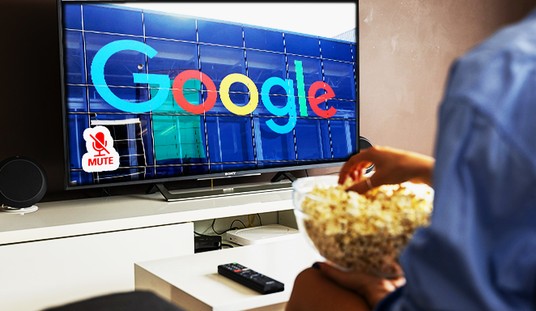

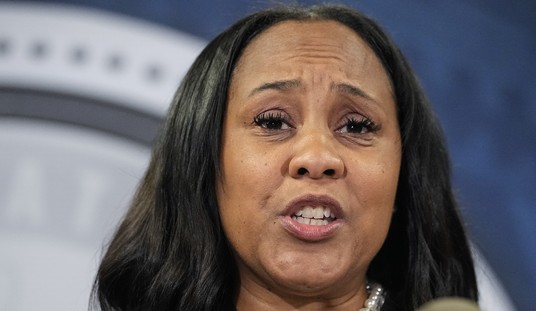

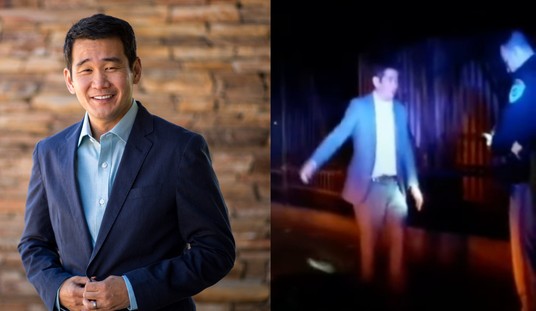

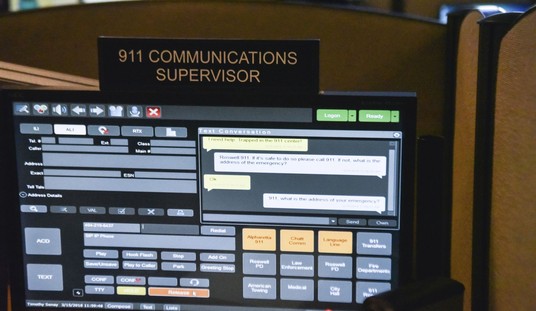

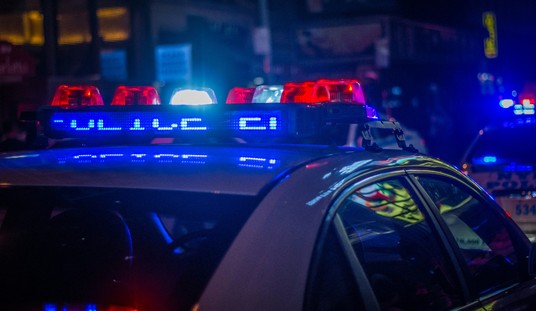
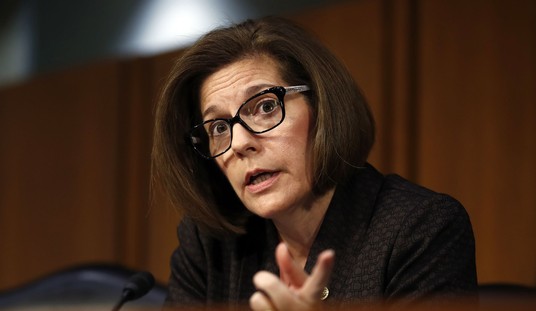
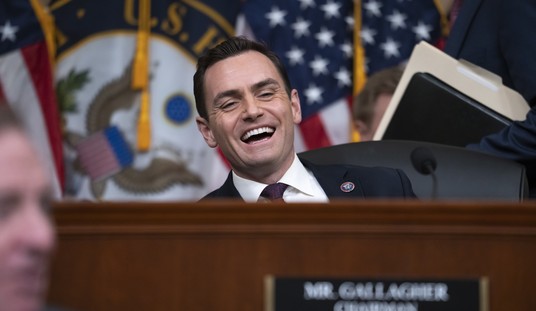
Join the conversation as a VIP Member